

Biography of Obata Toshishiro
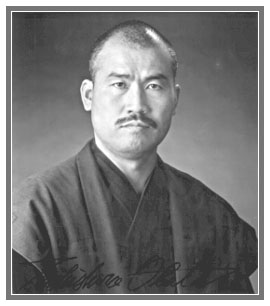
Obata Toshishiro is the founder and headmaster of Shinkendo Japanese swordsmanship. "Shin (True) - Ken (Sword) - Do (Way)" is a system of Japanese swordsmanship which incorporates all aspects of sword study: Suburi (swinging methods), Battoho (drawing methods), Tanren Kata (solo forms), Tachiuchi (sparring) and Tameshigiri (test-cutting). The Shinkendo World Headquarters is located in Los Angeles, CA, USA, where Obata-kaiso teaches full-time.
The Obata family originally descended from the Heike clan's stream. Of samurai family lineage, Obata Toshishiro was born in Japan in 1948. Mr. Obata is a descendant of Obata Masamori, who served as a general and strategist (one of the famous 24 strategists) for the Takeda family during the cival war, Sengoku era. Masamori would become the lord of Kaizu Jo (castle) in Shin Shu (Nagano) province.
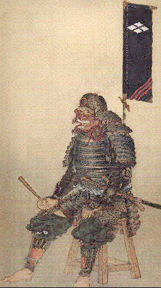 Obata Masamori's son, Obata Kagenori (1570-1644), became a page and companion to Japans second Tokugawa Shogun, Tokugawa Hidetada. During this time in Kagenori's youth, he would study Kenjutsu and general scholarship with Hidetada. Later, during the Osaka winter campaign, Kagenori was directed by the Tokugawa family to infiltrate and join the Toyotomi camps for the purpose of gathering intelligence. Before the Summer campaign began, Kagenori returned to the side of the Tokugawa family and later completed the famous "Takeda-ryu Koyo Gunkan-sho". This work was the foundation of the "Heiho Okugi-sho", a secret book of strategy.
Obata Masamori's son, Obata Kagenori (1570-1644), became a page and companion to Japans second Tokugawa Shogun, Tokugawa Hidetada. During this time in Kagenori's youth, he would study Kenjutsu and general scholarship with Hidetada. Later, during the Osaka winter campaign, Kagenori was directed by the Tokugawa family to infiltrate and join the Toyotomi camps for the purpose of gathering intelligence. Before the Summer campaign began, Kagenori returned to the side of the Tokugawa family and later completed the famous "Takeda-ryu Koyo Gunkan-sho". This work was the foundation of the "Heiho Okugi-sho", a secret book of strategy.
During his lifetime, Obata Kagenori became known as the father of "Koshu-ryu Gungaku", also referred to as "Takeda-ryu".
Gunma prefecture, the birthplace of Obata Toshishiro, is known for producing famous swordsman, such as the notable Kamakura patriot Nitta Yoshisada, and the founder of the Shinkage school of swordsmanship, Kamiizumi Ise-no-kami Hidetsuna. Obata had been enamored with swordsmanship from a very young age and dreamed of studying it seriously someday. In 1966, the 18-year-old Obata set out to Tokyo to become a professional martial artist. Upon visiting the Yoshinkan dojo, he witnessed a demonstration by Honbu Shihan and became fascinated with aikido. Soon after, he was accepted as an uchideshi (literally, "house student," or live-in apprentice) under the late Master Shioda Gozo, and remained as such, teaching at Yoshinkan Honbu as well as universities, the Metropolitan Riot Police and the Japanese Self Defense Army for 7 years.
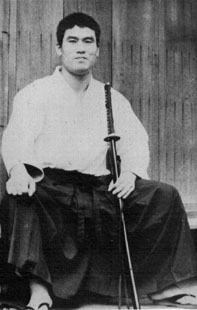 Looking to expand on the sword work taught in aikido training, the young Obata cross-trained in several other disciplines, including Yagyu Shinkage Ryu swordsmanship under the twenty-first generation Yagyu Nobuharu-soke, and the study of Zen with the members of the Shiyukai. However, as an uchideshi, he was not able to pursue other arts seriously, and as a result left the Yoshinkan in 1973.
Looking to expand on the sword work taught in aikido training, the young Obata cross-trained in several other disciplines, including Yagyu Shinkage Ryu swordsmanship under the twenty-first generation Yagyu Nobuharu-soke, and the study of Zen with the members of the Shiyukai. However, as an uchideshi, he was not able to pursue other arts seriously, and as a result left the Yoshinkan in 1973.
Obata was welcomed by the Tate dojo to be a Bujutsu Shihan, and as such became a member of the Tokyo Wakakoma (an elite group of martial artists, who serve as fight scene choreographers and stuntmen for Japanese television and movies) for which he was a trainer for several years. Before Obata's joining, Judo-type techniques were favored for most of Japan's T.V. and films; but soon after, Obata's action coordinating teacher Mr. Hayashi Kunishiro began to introduce aikido techniques, which became increasingly popular and aided in the spreading of aikido in Japan's film and television world.
As the Action Coordinator teacher, Mr. Hayashi also taught or arranged for the study of all aspects of samurai manner and tradition for the Wakakoma's members in order to ensure accurate performances. These skills, such as archery from horseback (kyubajutsu), the wearing of traditional clothing and armor (yoroi/gusoku), spear (sojutsu), glaive (naginata) and various sword styles, were taught by well-known specialists in their respective fields, and are increasingly rare to find in modern martial arts. Additionally, Obata sought outside instruction from noted teachers such as Uchida Tesshisai Sensei of Ioriken Battojutsu, Nawa Yumio Sensei of Masaki Ryu Manrikigusari, Ouedo Juttejutsu (and ninpo researcher), and Inoue Motokatsu Sensei of Ryukyu Kobudo.
Through the experience with the Tokyo Wakakoma and the martial arts connections made during this time, Obata was able to seriously study classical sword arts as well as other budo while developing skills as an action coordinator and actor.
In 1980, Obata came to the USA after being entrusted with the title of Chief Instructor for North America of Toyama Ryu and Nakamura Ryu battodo by Master Nakamura Taizaburo, as well as Chief Instructor and Founder of the USA Battodo Federation by the All Japan Battodo Federation.
Sword-related accidents were becoming more common, and the need for a stronger foundation in safety and accurate technique was needed. After about ten years of teaching Battodo, Obata-sensei redirected his efforts into developing the fundamentals of his own stylized sword art, Shinkendo, a system based upon his experience, knowledge and historical research. In 1996, he also founded the Aikibujutsu Tanren Kenkyukai, a research and practice organization of bujutsu/ budo ranging from the earliest forms of aikijutsu to modern aikido. Taihojutsu (control and arresting techniques) is also part of the curriculum, and is an area tailored for use in the law enforcement and security fields.
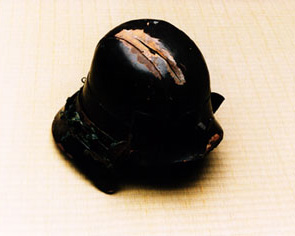 Obata Toshishiro-kaiso is one of the most well-rounded and authentic martial artists in the field today. He is the Founder and Kaicho of the Aikibujutsu Tanren Kenkyukai, Founder and Chief Instructor of the Kokusai Toyama Ryu Renmei, and the Founder and Chief Instructor of the International Shinkendo Federation. In addition, Obata-kaiso has been translated important works published by the Hawley Private Library, such as "Mon"; "Bows, Arrows and Quiver"; "Token"; "Heiho Okugisho" and the "47 Samurai" (soon to be released). Obata-kaiso has also worked in the film industry writing screenplays, action coordinating and acting (appearing in movies such as Black Rain, Rage & Honor, Rising Sun, Demolition man, the Shadow, Showdown in Little Tokyo and the Hunted). He has also produced a number of martial arts videos, including Molten Fire, Crimson Steel, and Shinkendo – Samurai Swordsmanship, and authored several books, including Naked Blade, Crimson Steel, Kama, and Samurai Aikijutsu, and more recently Shinkendo: Samurai Swordsmanship and Shinkendo Tameshigiri: Samurai Swordsmanship and Test-Cutting.
Obata Toshishiro-kaiso is one of the most well-rounded and authentic martial artists in the field today. He is the Founder and Kaicho of the Aikibujutsu Tanren Kenkyukai, Founder and Chief Instructor of the Kokusai Toyama Ryu Renmei, and the Founder and Chief Instructor of the International Shinkendo Federation. In addition, Obata-kaiso has been translated important works published by the Hawley Private Library, such as "Mon"; "Bows, Arrows and Quiver"; "Token"; "Heiho Okugisho" and the "47 Samurai" (soon to be released). Obata-kaiso has also worked in the film industry writing screenplays, action coordinating and acting (appearing in movies such as Black Rain, Rage & Honor, Rising Sun, Demolition man, the Shadow, Showdown in Little Tokyo and the Hunted). He has also produced a number of martial arts videos, including Molten Fire, Crimson Steel, and Shinkendo – Samurai Swordsmanship, and authored several books, including Naked Blade, Crimson Steel, Kama, and Samurai Aikijutsu, and more recently Shinkendo: Samurai Swordsmanship and Shinkendo Tameshigiri: Samurai Swordsmanship and Test-Cutting.
On February 16th, 1994, Obata-kaiso performed a rare kabutowari (helmet-splitting) test. This traditional test employs the skill of a master swordsman to evaluate the strength of both sword and armor in the most direct way possible -- striking a kabuto (Japanese helmet) at full force. The resulting gash from Obata-kaiso's performance measured 13 cm, setting a world record.
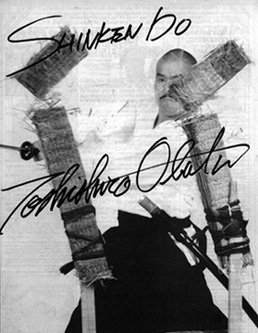 For 7 consecutive years Obata-kaiso was the All Japan Battodo Champion, Ioriken Battojutsu Champion for 5 years and Toyama Ryu All Japan Champion for 2 years. Some of Obata-kaiso's ranks include Menkyo Kaiden, Keisho Denju, Shihan, various certifications and a combined total of 75 dan rankings.
For 7 consecutive years Obata-kaiso was the All Japan Battodo Champion, Ioriken Battojutsu Champion for 5 years and Toyama Ryu All Japan Champion for 2 years. Some of Obata-kaiso's ranks include Menkyo Kaiden, Keisho Denju, Shihan, various certifications and a combined total of 75 dan rankings.
* For more information about Obata-kaiso or Shinkendo, please read the interview "Origins of Shinkendo".
Please direct questions and comments to:
![]()










